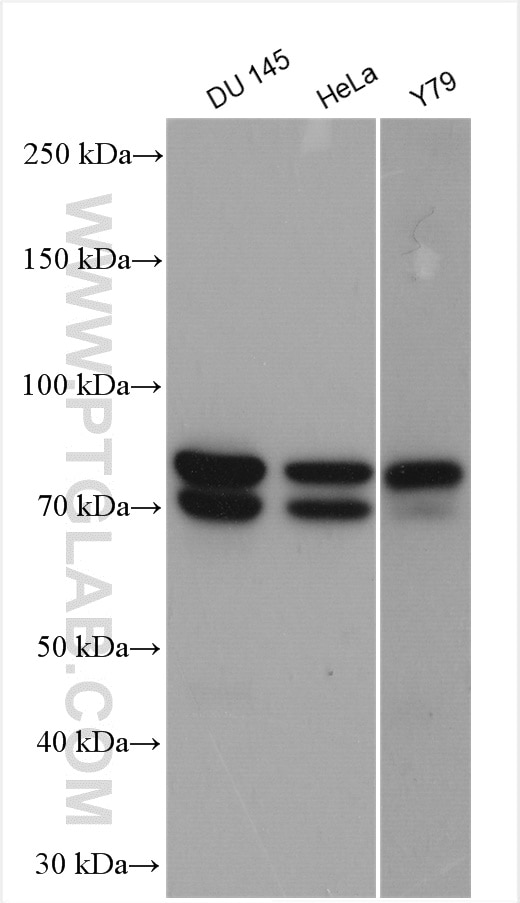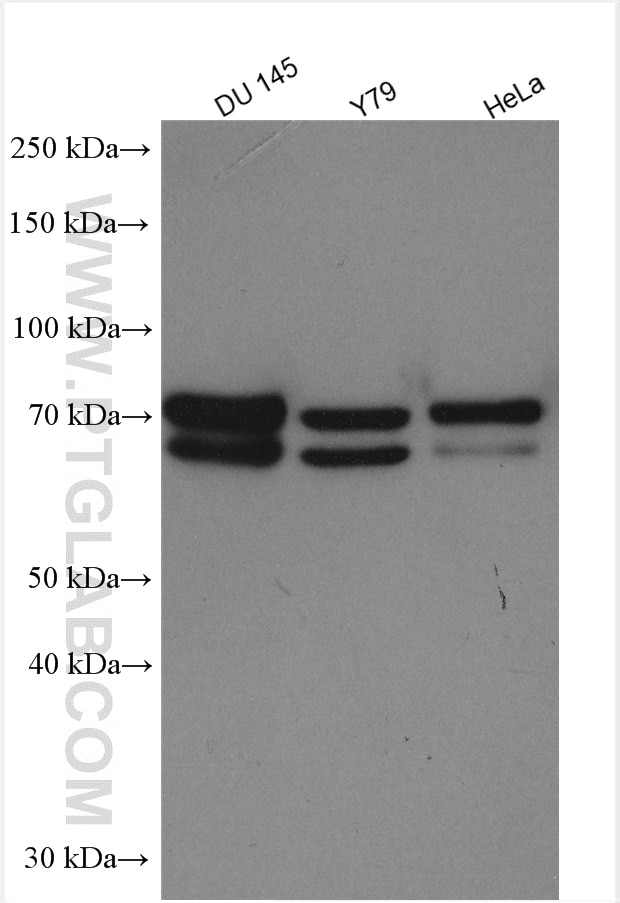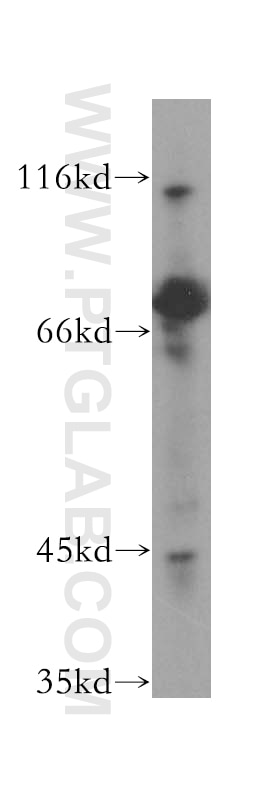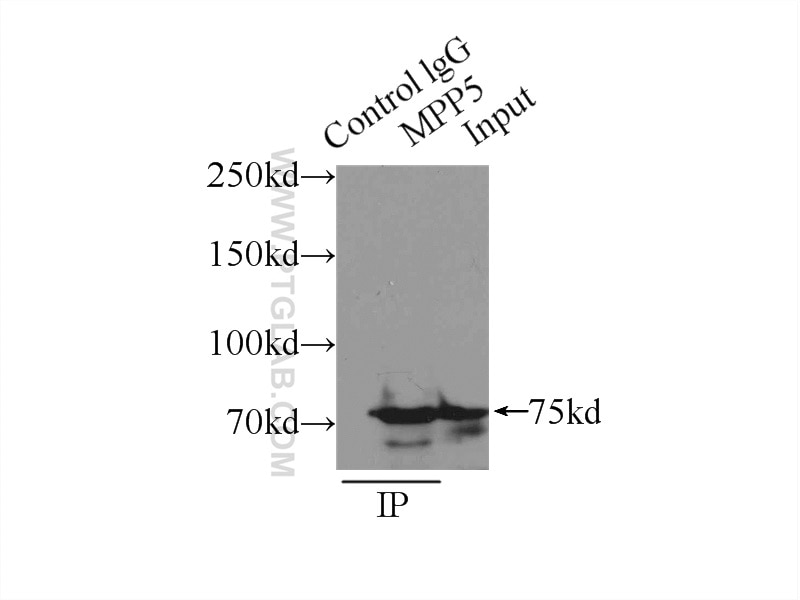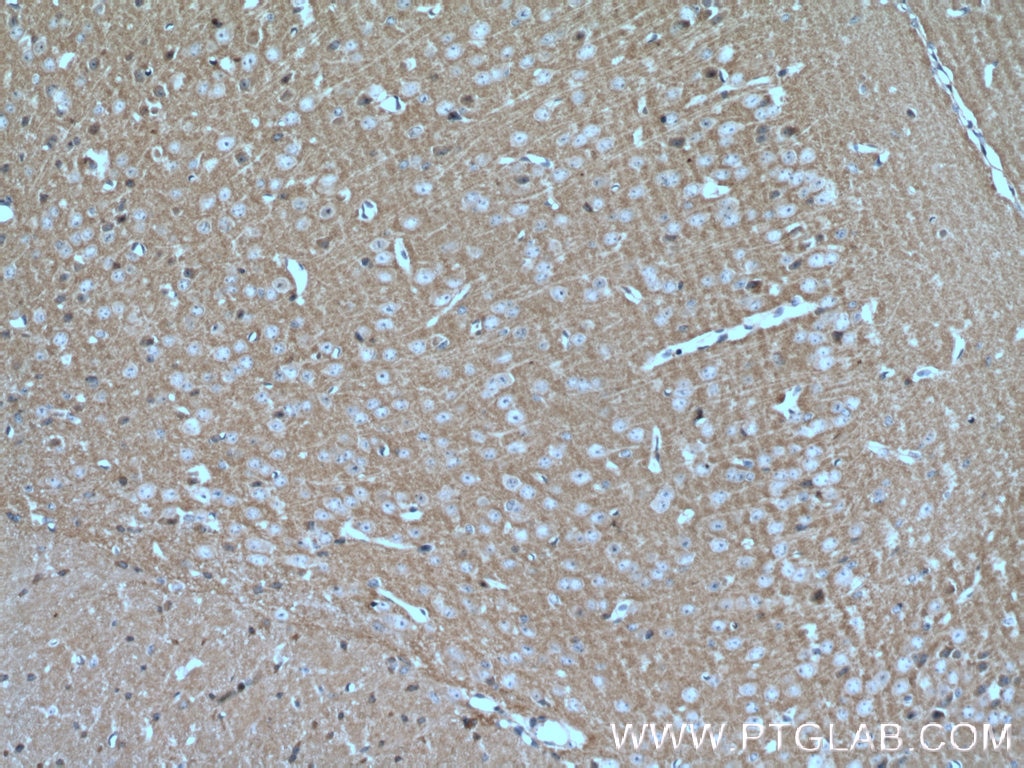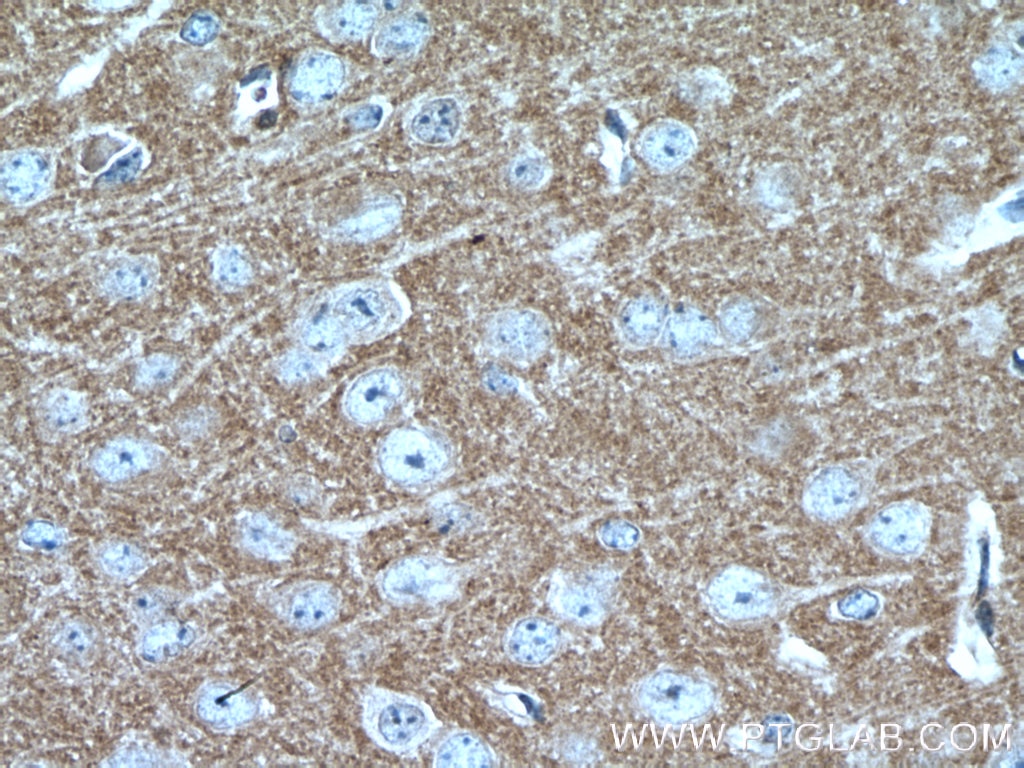- Featured Product
- KD/KO Validated
MPP5 Polyklonaler Antikörper
MPP5 Polyklonal Antikörper für IHC, IP, WB, ELISA
Wirt / Isotyp
Kaninchen / IgG
Getestete Reaktivität
human, Maus, Ratte
Anwendung
WB, IP, IHC, IF, ELISA
Konjugation
Unkonjugiert
Kat-Nr. : 17710-1-AP
Synonyme
Galerie der Validierungsdaten
Geprüfte Anwendungen
| Erfolgreiche Detektion in WB | DU 145-Zellen, HeLa-Zellen, humanes Hirngewebe, Y79-Zellen |
| Erfolgreiche IP | Maushirngewebe |
| Erfolgreiche Detektion in IHC | Maushirngewebe Hinweis: Antigendemaskierung mit TE-Puffer pH 9,0 empfohlen. (*) Wahlweise kann die Antigendemaskierung auch mit Citratpuffer pH 6,0 erfolgen. |
Empfohlene Verdünnung
| Anwendung | Verdünnung |
|---|---|
| Western Blot (WB) | WB : 1:2000-1:10000 |
| Immunpräzipitation (IP) | IP : 0.5-4.0 ug for 1.0-3.0 mg of total protein lysate |
| Immunhistochemie (IHC) | IHC : 1:50-1:500 |
| It is recommended that this reagent should be titrated in each testing system to obtain optimal results. | |
| Sample-dependent, check data in validation data gallery | |
Veröffentlichte Anwendungen
| KD/KO | See 2 publications below |
| WB | See 5 publications below |
| IHC | See 6 publications below |
| IF | See 15 publications below |
| IP | See 1 publications below |
Produktinformation
17710-1-AP bindet in WB, IP, IHC, IF, ELISA MPP5 und zeigt Reaktivität mit human, Maus, Ratten
| Getestete Reaktivität | human, Maus, Ratte |
| In Publikationen genannte Reaktivität | human, Maus |
| Wirt / Isotyp | Kaninchen / IgG |
| Klonalität | Polyklonal |
| Typ | Antikörper |
| Immunogen | MPP5 fusion protein Ag12010 |
| Vollständiger Name | membrane protein, palmitoylated 5 (MAGUK p55 subfamily member 5) |
| Berechnetes Molekulargewicht | 675 aa, 77 kDa |
| Beobachtetes Molekulargewicht | 70-80 kDa |
| GenBank-Zugangsnummer | BC095485 |
| Gene symbol | MPP5 |
| Gene ID (NCBI) | 64398 |
| Konjugation | Unkonjugiert |
| Form | Liquid |
| Reinigungsmethode | Antigen-Affinitätsreinigung |
| Lagerungspuffer | PBS mit 0.02% Natriumazid und 50% Glycerin pH 7.3. |
| Lagerungsbedingungen | Bei -20°C lagern. Nach dem Versand ein Jahr lang stabil Aliquotieren ist bei -20oC Lagerung nicht notwendig. 20ul Größen enthalten 0,1% BSA. |
Hintergrundinformationen
MPP5, also named as PALS1, belongs to the MAGUK family which interact with the cytoskeleton and regulate cell proliferation, signaling pathways, and intracellular junctions. MPP5 is thought to organize intracellular PALS1-CRB-MUPP1 protein scaffolds in the retina that are involved in maintenance of photoreceptor-Mu¨ller glia cell adhesion. MPP5 plays a role in tight junctions biogenesis and in the establishment of cell polarity in epithelial cells.
Protokolle
| Produktspezifische Protokolle | |
|---|---|
| WB protocol for MPP5 antibody 17710-1-AP | Protokoll herunterladen |
| IHC protocol for MPP5 antibody 17710-1-AP | Protokoll herunterladen |
| IP protocol for MPP5 antibody 17710-1-AP | Protokoll herunterladen |
| Standard-Protokolle | |
|---|---|
| Klicken Sie hier, um unsere Standardprotokolle anzuzeigen |
Publikationen
| Species | Application | Title |
|---|---|---|
Neuron Microcephaly Proteins Wdr62 and Aspm Define a Mother Centriole Complex Regulating Centriole Biogenesis, Apical Complex, and Cell Fate. | ||
Neuron Mosaic Analysis with Double Markers Reveals Distinct Sequential Functions of Lgl1 in Neural Stem Cells. | ||
Dev Cell Multicellular rosettes link mesenchymal-epithelial transition to radial intercalation in the mouse axial mesoderm | ||
Cell Death Differ The evolutionary history of the polyQ tract in huntingtin sheds light on its functional pro-neural activities. | ||
J Am Soc Nephrol Crumbs2 Is an Essential Slit Diaphragm Protein of the Renal Filtration Barrier. |
